Note to teachers/parents: This blog may contain information/language that is inappropriate for kids under ten.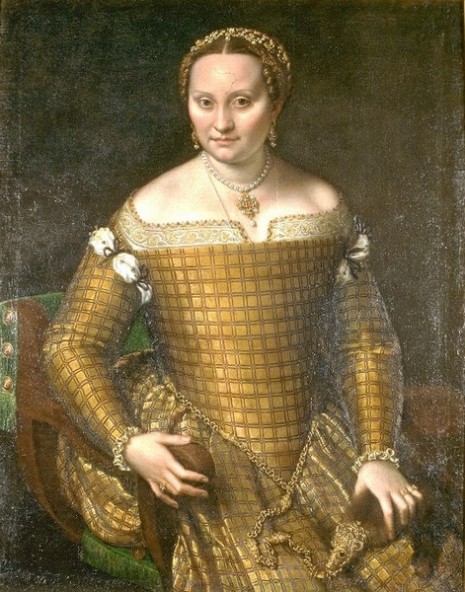 When I showed my husband Wednesday’s blog about divorce corsets, he stopped at the part about busks and asked me what a busk was. I was stunned. “How do you not know what a busk is? You’re a history teacher!” He patiently pointed out that because I’ve been immersed in researching fashion for several years now, I am assuming collective knowledge and that no, everyone doesn’t know what a busk is.
When I showed my husband Wednesday’s blog about divorce corsets, he stopped at the part about busks and asked me what a busk was. I was stunned. “How do you not know what a busk is? You’re a history teacher!” He patiently pointed out that because I’ve been immersed in researching fashion for several years now, I am assuming collective knowledge and that no, everyone doesn’t know what a busk is.
Hence the subject of today’s blog. I am here to tell you all about the prequel to the divorce corset—the busk. Now you, too, will be as enchanting at parties as I am. You’ll fascinate people with your arcane knowledge. You’re welcome.
A busk (sometimes called a tucker, and later on used as the stiffened part of a “stomacher”) was a basic component of a woman’s dress in the Renaissance. It was shaped like an inverted triangle and was shoved down inside the bodice to keep it stiff and rigid, creating the impression that a woman’s upper body resembled an ice cream cone (the sugar kind). The above picture was just too perfect–her dress really does resemble a sugar cone, doesn’t it?
Even working women wore some form of busk as part of their regular combo of bodice and separate skirt over a chemise. (Nope, no underwear.) The bodice had to flatten the bosom, rather than shove it upward. It was the style. Bosoms were out.
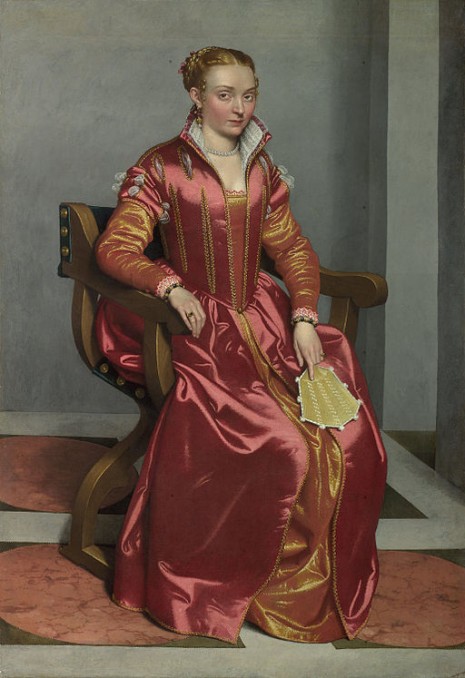 Working women achieved the flattened front by tight lacing and stiffened stays (generally made of leather). Women of means were bound in much more tightly. Stays and busks were made of wood, bone, ivory, metal, or, as whaling became more popular, whalebone.* (34) They weren’t yet called corsets, by the way.
Working women achieved the flattened front by tight lacing and stiffened stays (generally made of leather). Women of means were bound in much more tightly. Stays and busks were made of wood, bone, ivory, metal, or, as whaling became more popular, whalebone.* (34) They weren’t yet called corsets, by the way.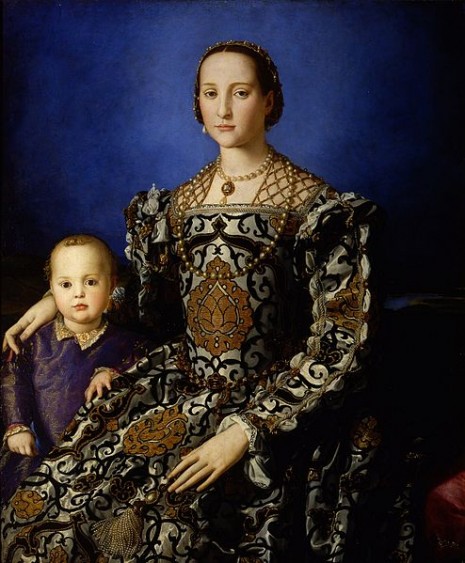
Even little girls were tightly bound into boned bodices, sometimes with pieces of lead in the place where breasts ought to grow.* (33) It’s unclear if such methods actually succeeded in preventing development, but from the looks of most of these portraits, artists endeavored to paint their subjects in accordance with the bosomless ideal.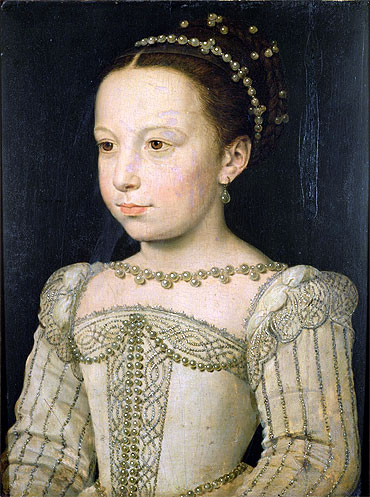
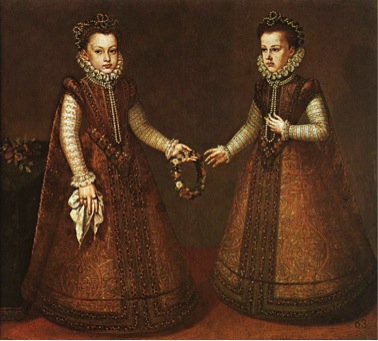
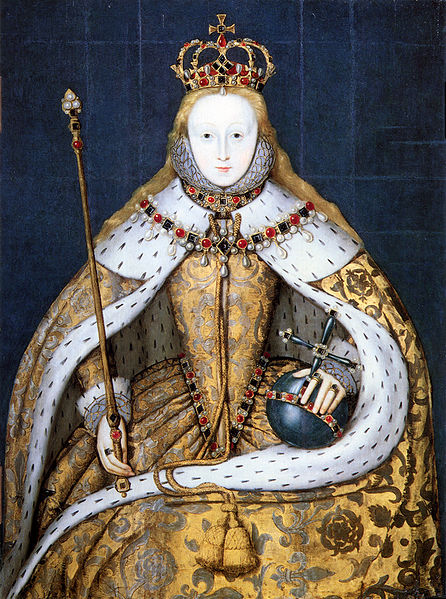 As the always-entertaining historian Liza Picard put it, “What full-bosomed women did, other than a general spreading of the masses is unclear; after all, pictures of 1920s clothes would have you believe that women had suddenly given up breasts, which is improbable.”** (132)
As the always-entertaining historian Liza Picard put it, “What full-bosomed women did, other than a general spreading of the masses is unclear; after all, pictures of 1920s clothes would have you believe that women had suddenly given up breasts, which is improbable.”** (132)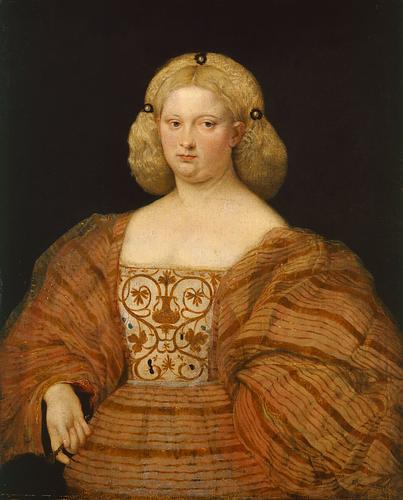 I must pause briefly to discuss the above portrait (painted around 1530 by Giovanni Cariani and called “Woman with a Fan”). The woman is lovely, and more generously proportioned than some of the other portrait subjects here. But look at her stomacher. It’s practically rectangular, and it seems literally painted on–nothing is getting shoved up or smooshed in, and no real “contouring” is happening, from a painterly perspective. (We won’t even delve into the disappearance of her left hand.) I think the artist must have taken some liberties here. Because when I attended a recent Broadway production of a Shakespeare play, even a man, built along these same lines and laced into a tight bodice, produced more, um, topography than is shown in this painting.
I must pause briefly to discuss the above portrait (painted around 1530 by Giovanni Cariani and called “Woman with a Fan”). The woman is lovely, and more generously proportioned than some of the other portrait subjects here. But look at her stomacher. It’s practically rectangular, and it seems literally painted on–nothing is getting shoved up or smooshed in, and no real “contouring” is happening, from a painterly perspective. (We won’t even delve into the disappearance of her left hand.) I think the artist must have taken some liberties here. Because when I attended a recent Broadway production of a Shakespeare play, even a man, built along these same lines and laced into a tight bodice, produced more, um, topography than is shown in this painting.
Luckily for the full-figured woman, the 1630s ushered in a new, full-figured look. A post-Renaissance Breastoration?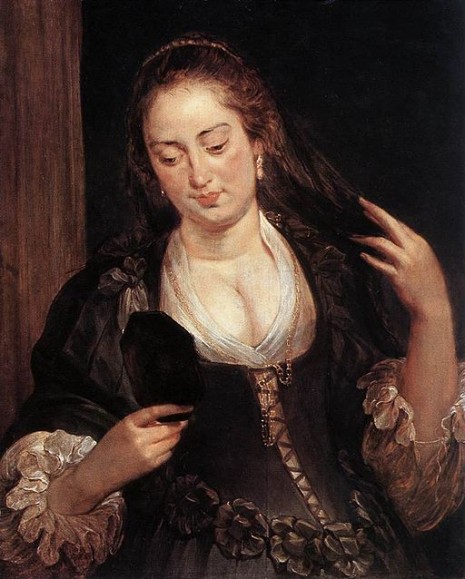
sources: *Eline Canter Cremers-van der Does, The Agony of Fashion, Poole, Dorset: Blandford Press Ltd 1980
**Liza Picard, Elizabeth’s London